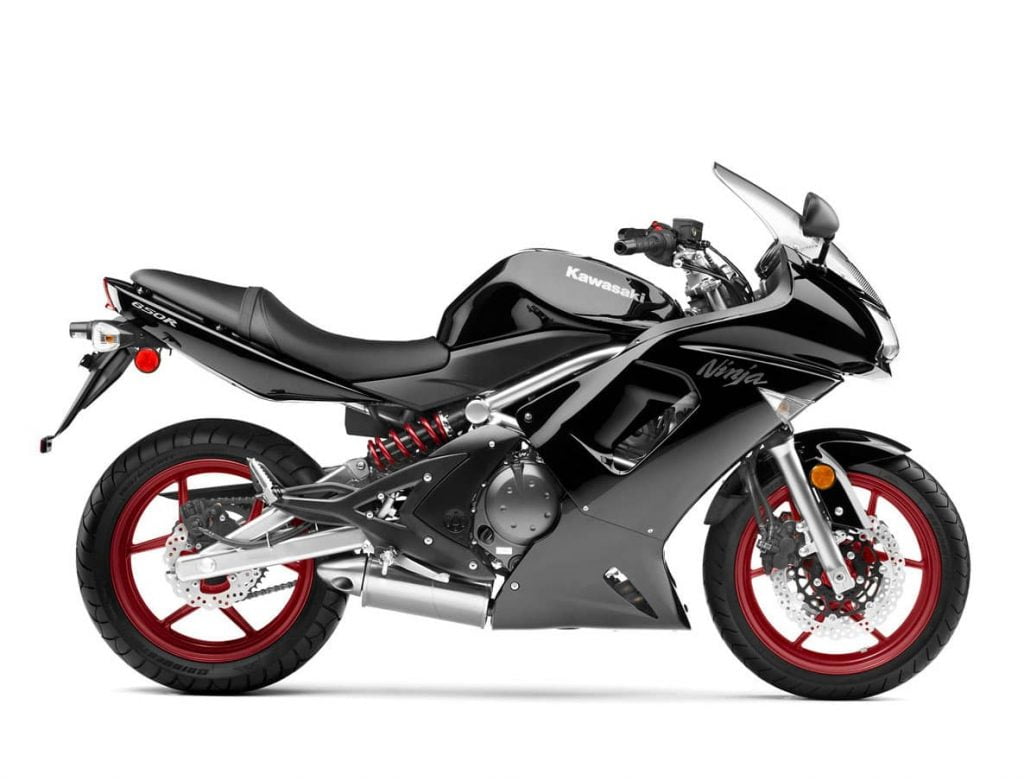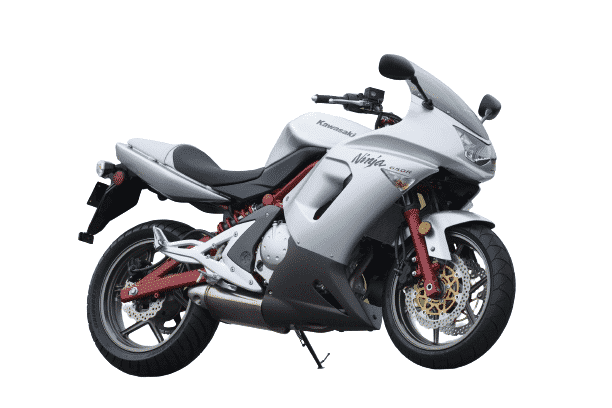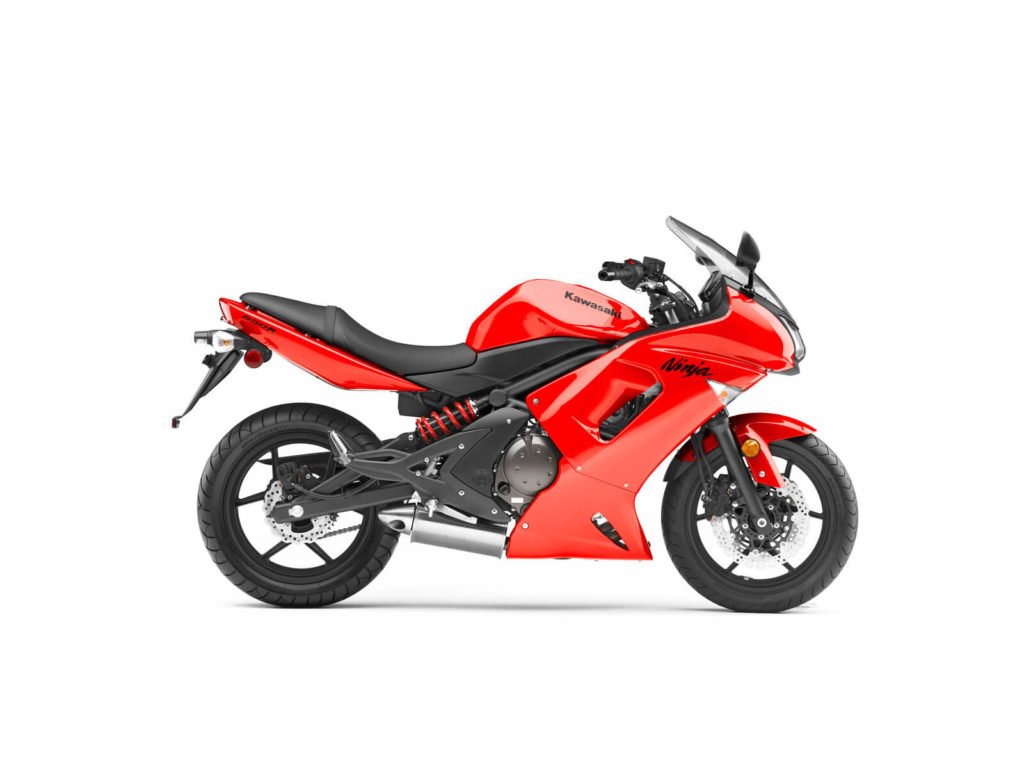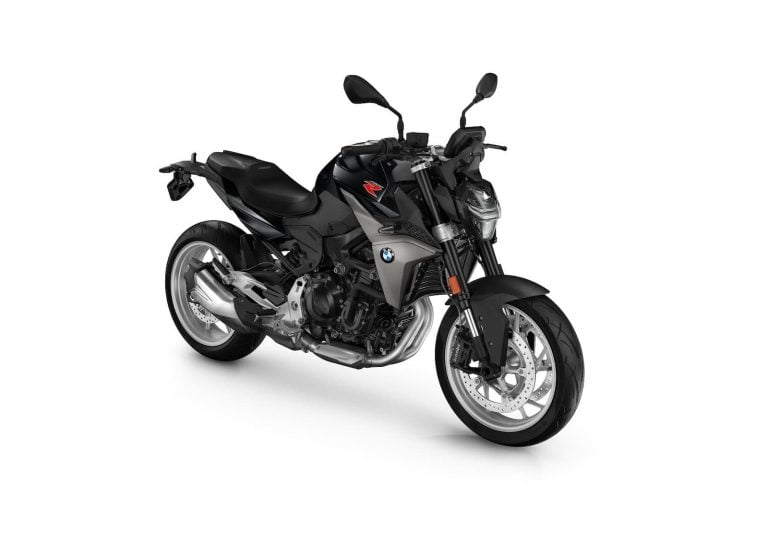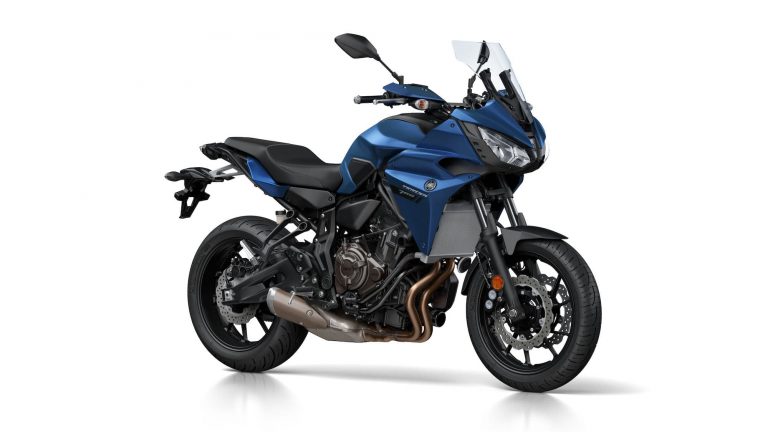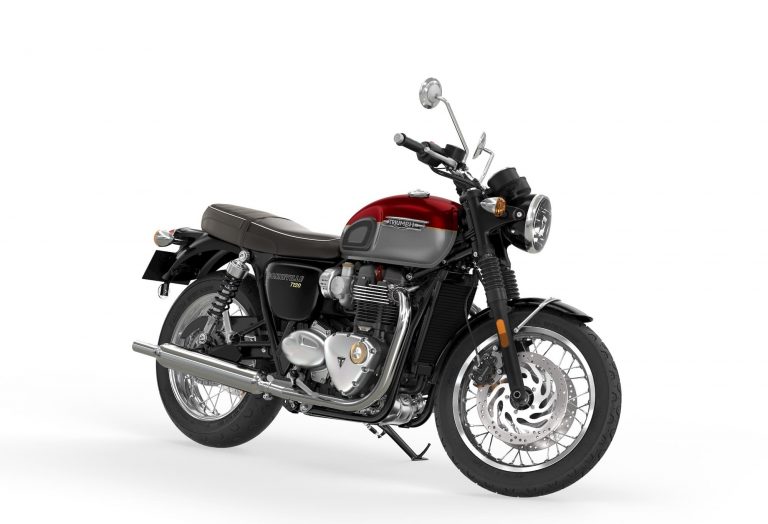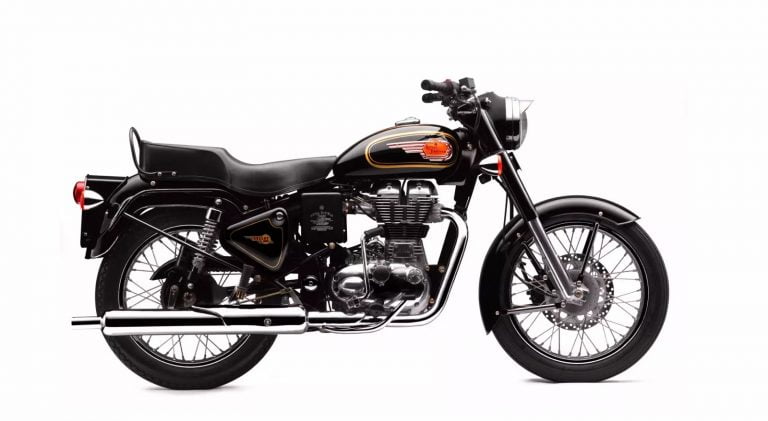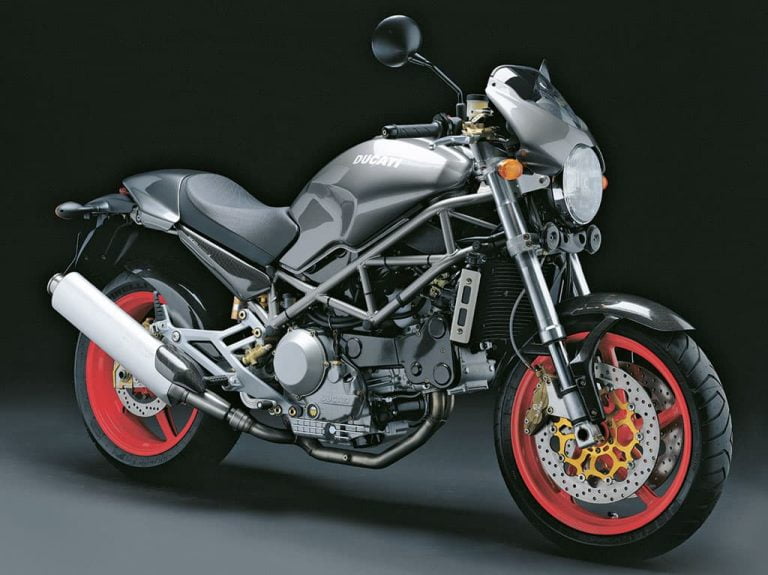Kawasaki Ninja 650R (ER-6F, 2006-2008) Maintenance Schedule and Service Intervals
This is the maintenance schedule with associated service intervals for the Kawasaki Ninja 650, also known as the ER-6F or EX650.
The Kawasaki Ninja 650/ER-6F is a parallel twin motorcycle with a fairing. It’s the sportier stablemate of the naked ER-6N, which apart from the fairing and a few riding position changes is otherwise identical.
The Ninja 650R is based on a 649cc parallel twin with a 180-degree offset crankshaft. It has 8 valves, liquid cooling, and has always had fuel injection. It has, since inception, always made around 53 kW or 70 hp, peaking around 7500 rpm — docile, but not underpowered by any means.
It replaced the Kawasaki Ninja 500R, also known as the EX500 or GPZ500S, a parallel twin with a 498cc engine and fed by carburettors.
The Kawasaki Ninja 650 has gone through a few major updates since launch in 2006.
- 2006-2008 Kawasaki Ninja 650R, a.k.a. ER-6F/EX-6: The first base model. Made 53 kW (71 hp) @ 8,500 rpm, and weighed 208 kg (461 lb) wet. Twin gauges.
- 2009-2011 Kawasaki Ninja 650R a.k.a. ER-6F: First US imported model. Revised first edition with more midrange and better engine cooling. Reduced vibration from rubber engine and handlebar mounts. Wider seat, taller fairing. Big LCD (no tachometer dial) with red backlighting.
- 2012-2016 Kawasaki Ninja 650: All new bodywork, wider handlebars, new analogue tachometer + digital LCD with more information.
- 2017+ Kawasaki Ninja 650: New lightweight trellis frame and lighter engine — bike is 19 kg (42 lb) lighter. No side-mounted shock. New slipper clutch. More aggressive bodywork. Slightly lower top-end power due to emissions restrictions.
During the years, almost nothing has changed with the engine — though a few parts have (e.g. the air filter). Those are noted below.
This site has links for things like oil and spark plugs from which we earn a commission (which unfortunately nobody can save, not even us). If you appreciate this work, then please use those links. Thanks!
What you need to service the Kawasaki Ninja 650
If you’re servicing the Kawasaki Ninja 650, firstly, you might need these common motorcycle maintenance tools (thinks like an oil filter wrench, catch pan, etc.).
But aside from that, you’ll need these specific items to maintain the Kawasaki Ninja 650.
| Part | Kawasaki Ninja 650 (2006-2008) Spec |
|---|---|
| Oil | You need 1.8L (1.7 US qt) of SAE 10W-40 engine oil “with API SG, SH, SJ, SL or SM with JASO MA, MA1 or MA2 rating”, preferably Kawasaki 10W-40 Engine Oil.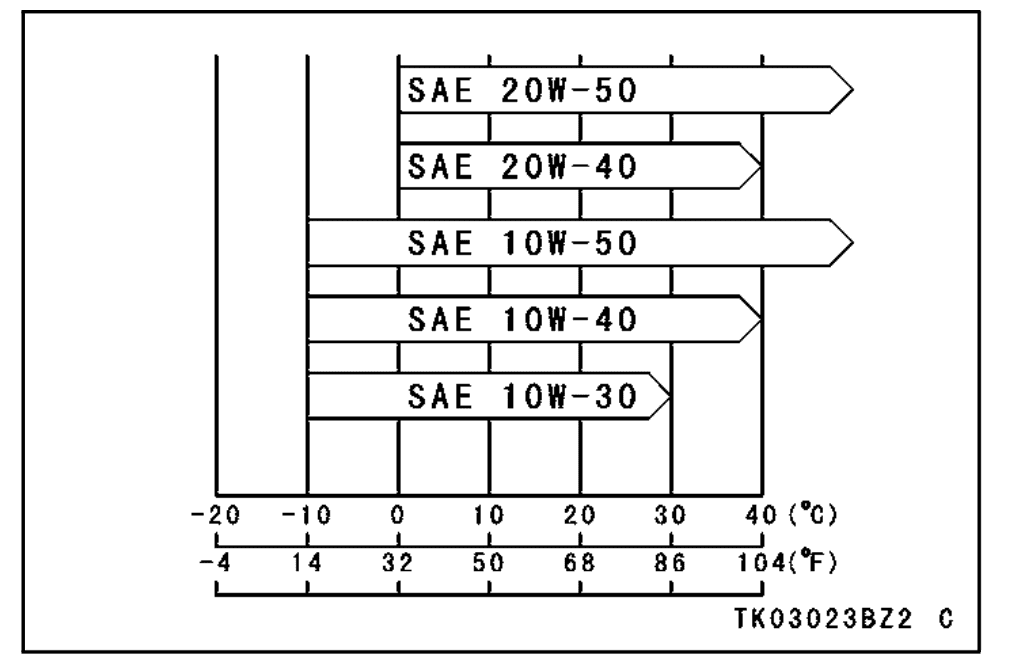 Don’t over-torque the drain bolt (spec is 30 Nm/22 lb-ft per the manual) — use a torque wrench if you don’t have experience with how much torque is enough. |
| Oil filter | Oil filter is part 16097-0008, or you can use Hiflofiltro HF303RC. Torque for oil filter is 17.5 Nm (12.9 ft-lb) (use a torque wrench) |
| Front brake pads | You can get original OEM parts from a dealership, or double-sintered EBC brake pads for better bite and wear. Part numbers are FA229HH and FA231HH for the left and right hand calipers respectively. |
| Rear brake pads | As with the front brake pads, you can get original OEM parts from a dealership, or double-sintered EBC brake pads for better bite and wear. EBC part number is FA192HH. |
| Spark plugs | NGK CR9EIA-9, with a spark plug gap of 0.8-9.0mm (use a spark plug gapping tool), torqued to 13 Nm or 9 ft-lb (use a torque wrench) |
| Air filter | Kawasaki changed the air cleaner during the evolutions of the Ninja 650R/Ninja 650. Part number is 11029-0008. DNA also makes performance air filters for later models, and their part number is P-K6N06-01. |
| Cable lubricant | Remember to lubricate your clutch cable (and brake cables if you have them) with a cable lubricant. Protect All Cable Life is a good general-purpose lubricant. |
| Chain lubricant | The chain needs to be lubricated every 600 km/400 miles (or more, if it gets wet/dirty). Motul chain paste is cheap and well-loved. |
| Brake fluid | Spec is to use DOT-4 brake fluid like Castrol DOT 4. |
| Coolant | Use nitrate-free, phosphate-free, ethylene glycol-based coolant with anti-corrosion inhibitors, e.g. Zerex Asian Vehicle blue coolant. |
| Grease | Use a lithium soap based grease for all the important greasing points. |
Maintenance Schedule for Kawasaki Ninja 650R/ER-6F
Below is the maintenance schedule for the Kawasaki Ninja 650R from 2006-2008. The schedule below has been simplified somewhat, making it easier to read.
The maintenance for the Kawasaki Ninja 650 is broken into three sections: Parts to replace, Engine Related Items, and Chassis Related Items.
Notes on maintenance schedule
- #: Service more frequently when operating in severe conditions: dusty, wet, muddy,
high speed, or frequent starting/stopping. - When there’s a time period that arrives before reaching the distance interval, perform the maintenance anyway.
- The Kawasaki manual recommends some items be recommended by dealers, including parts related to: steering, braking, fuelling, and coolant. But this is up to the owner.
Kawasaki Ninja 650R Core Maintenance
Note that the original Ninja 650R (2006-2008) manual did not mandate changing the air filter; instead, they say you should clean it. But you should replace it if it looks beyond its service life.
| km x 1000 | 12 | 24 | 36 | 48 | |
|---|---|---|---|---|---|
| mi x 1000 | 7.5 | 15 | 22.5 | 30 | Every |
| Perform standard annual inspection (see below) | ✓ | ✓ | ✓ | ✓ | Year |
| Engine oil # – change (Kawasaki 10W-40 Engine Oil) | ✓ | ✓ | ✓ | ✓ | Year |
| Oil filter – replace (HF303RC) | ✓ | ✓ | ✓ | ✓ | Year |
| Spark plug – replace (CR9EIA-9) | ✓ | ✓ | ✓ | ✓ | |
| Valve clearances – inspect / adjust | ✓ | ✓ | |||
| Coolant – change (Zerex Asian Vehicle Coolant) | ✓ | 3 years | |||
| Air filter – Clean | ✓ | ✓ | ✓ | ✓ | |
| Engine vacuum synchronization – inspect / adjust | ✓ | ✓ | ✓ | ✓ | |
| Idle speed – inspect | ✓ | ✓ | ✓ | ✓ | |
| Steering stem bearings – lubricate | ✓ | ✓ | 2 years | ||
| Brake hoses and pipe – replace | 4 years | ||||
| Brake fluid (front and rear) – change (Castrol DOT 4) | ✓ | ✓ | 2 years | ||
| Rubber parts of master cylinder and caliper – replace | ✓ | 4 years | |||
| Radiator hoses and O-rings – replace | 3 years | ||||
| Fuel hoses – replace | 5 years |
Standard annual inspection
Below is the list of items that Kawasaki recommends you inspect per the schedule above.
Notes
- Some items don’t need service if you haven’t ridden the motorcycle, e.g., bolt and nut tightness. But most of these items are very trivial and are always worth looking at, so we’re including them below in one list for simplicity.
- Inspect the brake system more often / as needed when riding it regularly.
| Regular maintenance — Ninja 650R |
|---|
| Throttle control system (play, smooth return, no drag) – inspect |
| Fuel leak (fuel hose and pipe) – inspect |
| Fuel hoses damage – inspect |
| Fuel hoses installation condition – inspect |
| Coolant level / leaks – inspect |
| Radiator hose damage – inspect |
| Radiator hoses installation condition – inspect |
| Clutch operation (play, engagement, disengagement) – inspect |
| Drive chain wear – inspect Inspect regularly if riding often, aggressively, or in harsh conditions |
| Drive chain guide wear – inspect |
| Tire air pressure – inspect |
| Wheels/tires damage – inspect |
| Tire tread wear, abnormal wear – inspect |
| Wheel bearings – inspect for damage / play |
| Brake system – inspect for leaks |
| Brake hoses – inspect for wear / damage |
| Brake pads – inspect wear level |
| Brake hose installation condition – inspect |
| Brake fluid level – inspect Inspect regularly — Manual recommends every 6 months |
| Brake operation (effectiveness, play, drag) – inspect |
| Brake light switch operation – inspect |
| Front forks/rear shock absorber operation (damping and smooth stroke) – inspect |
| Front forks/rear shock absorber oil leak – inspect |
| Steering – inspect for play / smooth operation |
| Lights and switches operation – inspect |
| Headlight aiming – inspect |
| Side stand switch operation – inspect |
| Engine stop switch operation – inspect |
| Chassis parts – lubricate |
| Bolts and nuts tightness – inspect |
| Evaporative emission control system – function (if fitted) |
| Air suction system damage – inspect (if fitted) |
Maintaining Your Chain on the Kawasaki Ninja 650R
As an everyday commuter / sport bike that gets exposed to all kinds of conditions, it’s especially important to maintain your chain on the Ninja 650R. Use a good-quality chain lubricant like Motul chain paste, or a Motul chain care kit which comes with a couple of handy tools to maintain the chain.
Kawasaki recommends you follow the following chain maintenance schedule:
| Chain maintenance item | Every |
|---|---|
| Check drive chain lubrication condition, lubricating if necessary (Motul chain paste) | 400 mi / 600 km |
| Check drive chain slack, adjusting if necessary | 600 mi / 1000 km |
Notes:
- Do these items (checking/adjusting slack, and checking/applying lubrication) more often if you ride your Ninja 650R in dusty or rainy conditions.
- Always lubricate the chain after washing the motorcycle.
Tyre size and tyre pressure for the Kawasaki Ninja 650
The Kawasaki Ninja 650 has the following tyres and tyre sizes standard:
| Tyre | Size | Tyre pressure (cold) |
|---|---|---|
| Front | 120/70 ZR17 M/C (58W) | 225 kPa/32psi |
| Rear | 160/60 ZR17 M/C (69W) | 250 kPa/36psi |
About the Kawasaki Ninja 650
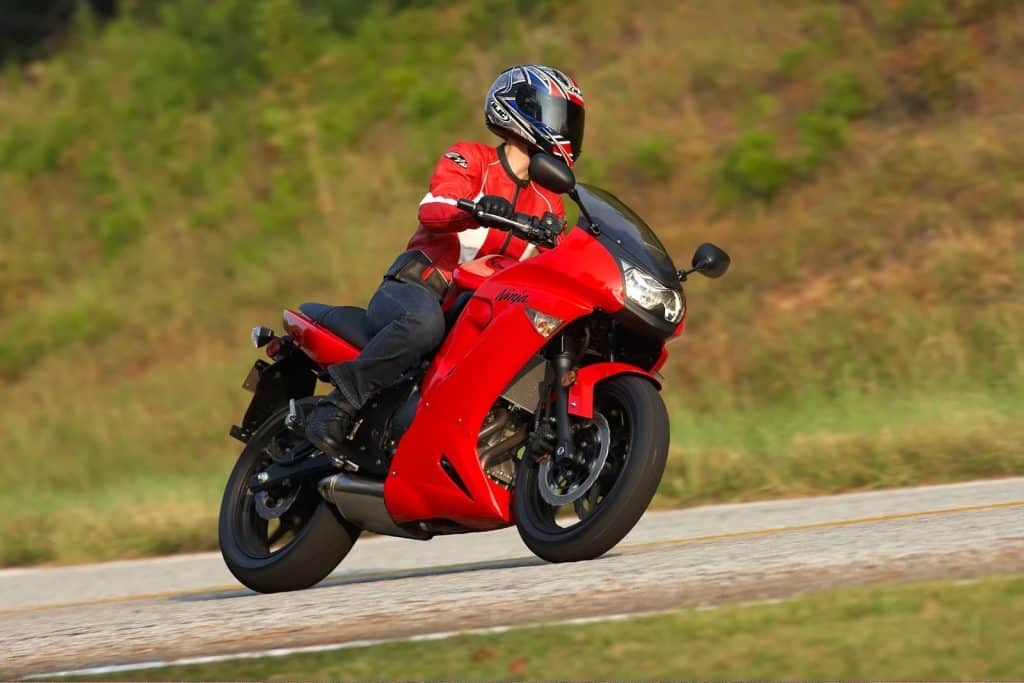
The 2006-2008 Kawasaki Ninja 650 took over from where the carburettor-fed Kawasaki Ninja 500R left off.
The Ninja 650 was a huge change. It had a lot more power with its 649cc fuel-injected parallel twin engine. But it didn’t give up any of the general utility of the 500R — the 70 hp (53 kW) powerband is perfect for everyday use, and ample for taking you up to speeds in excess of 100 mph (160 km/h) if you want to.
The general concept was the same — an all-purpose commuter with a sporty riding position. The Ninja 650 has handlebars, a comfortable foot peg position, and a generous windscreen — but still has sporty tyre profiles and considerable lean angle.
Plenty of people in the US use the Ninja 650R as their first bike, and may be happy with it for years. In the right hands (i.e. of someone who can shift quickly enough) it’s perfectly capable of sub-4 second 0-60 mph runs.
The early generation of Ninja 650 wasn’t imported to the US. But it was updated in 2009 with a variant which conformed to US emissions regulations and had a number of improvements, not least of which was vibration dampening on the engine and handlebars, making it a much more comfortable ride.
Manual for the Kawasaki Ninja 650
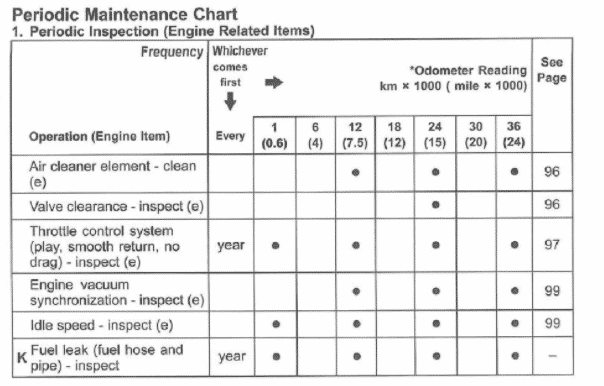
The above maintenance schedule comes directly from the user’s manual for the 2006-2008 Kawasaki Ninja 650 and Ninja 650 ABS, which you can get from Kawasaki directly. We took inputs from models from earlier years starting from 2006 to ensure completeness.

